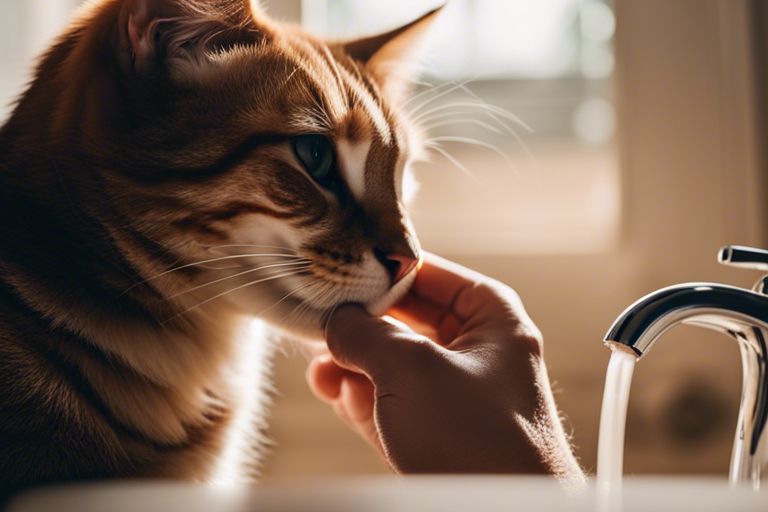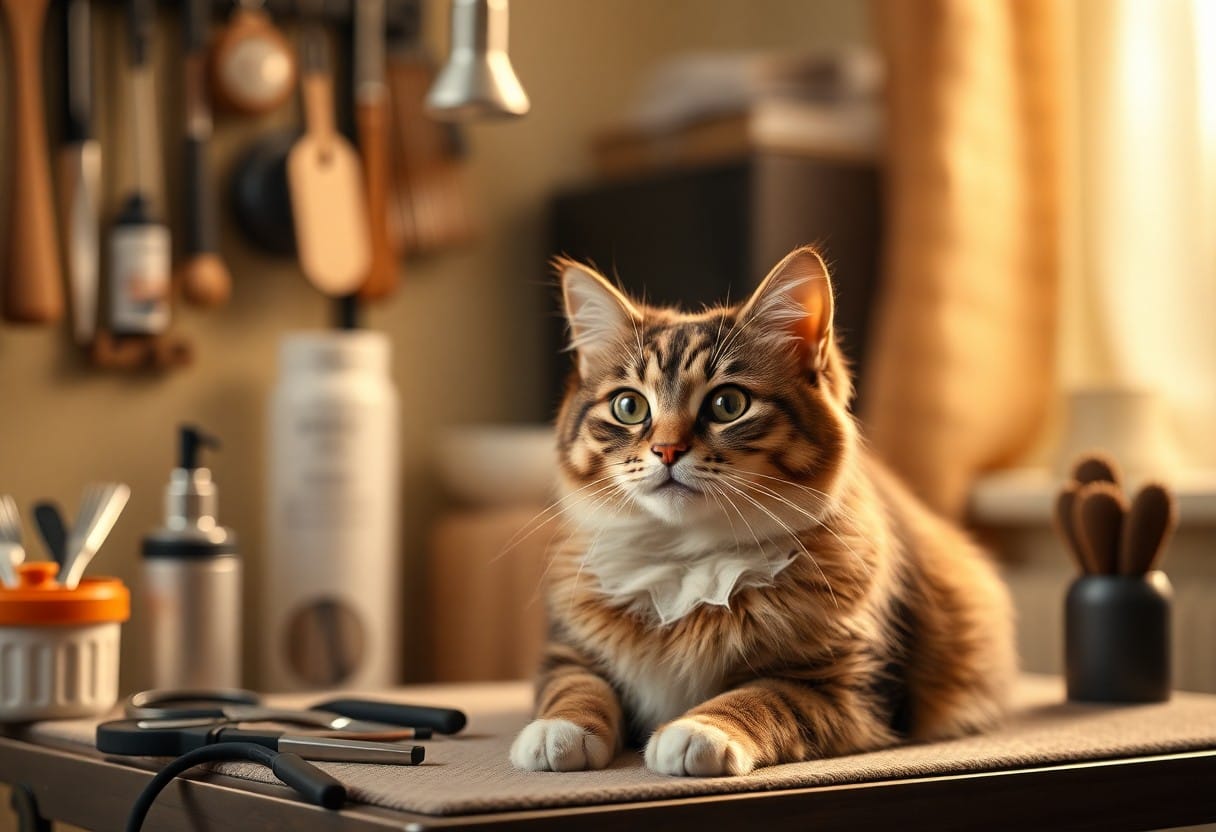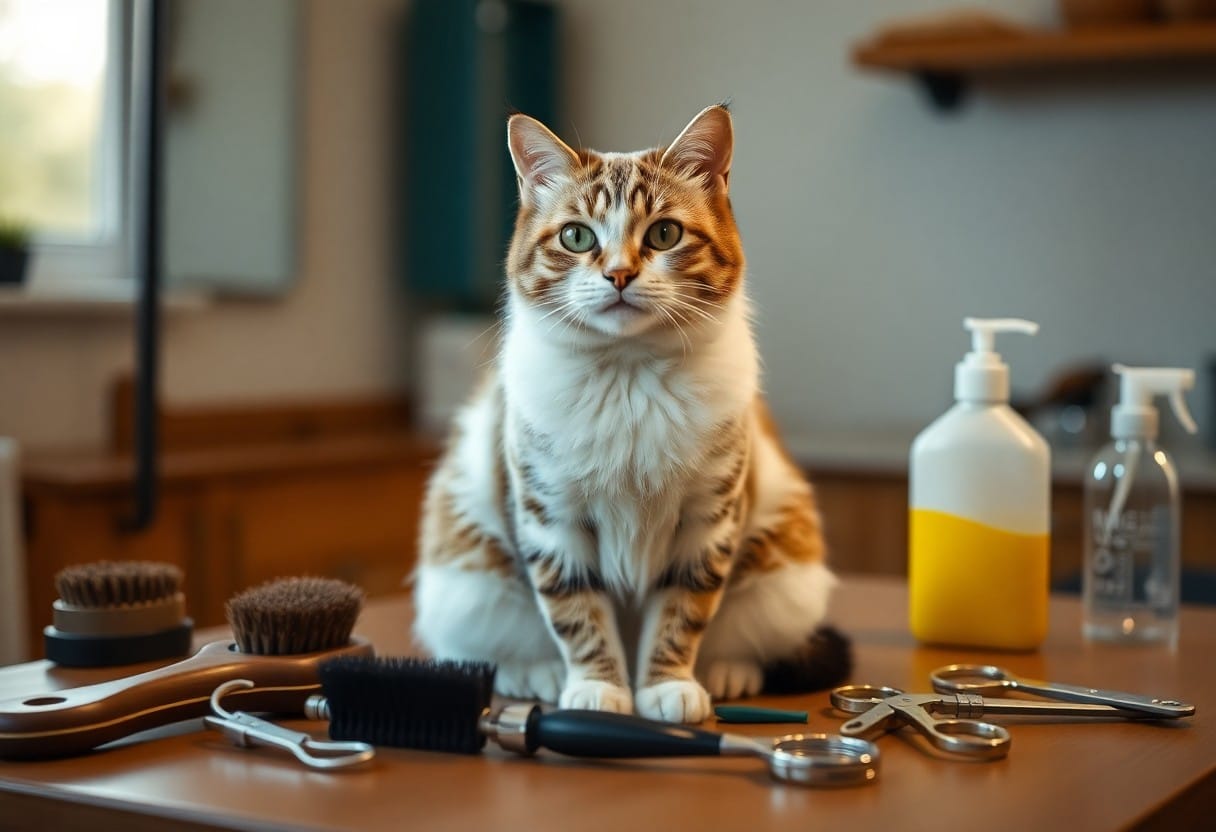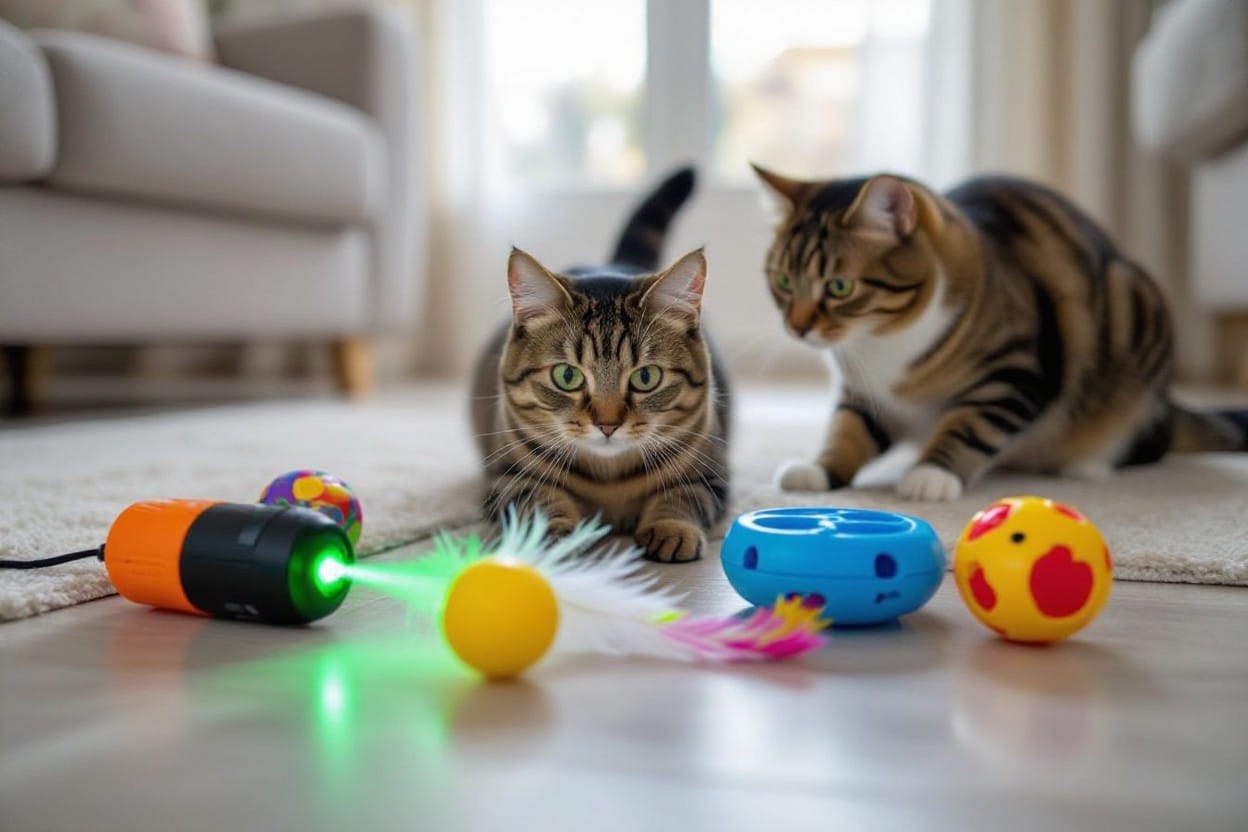Overwhelmed by the idea of brushing your cat’s teeth? It may seem like a daunting task, but with the right approach and some patience, it can become a routine part of your pet care regimen. By following our step-by-step guide, you’ll learn the proper techniques to ensure your cat’s dental health and overall well-being. Let’s look into the process of brushing your cat’s teeth with confidence and ease.
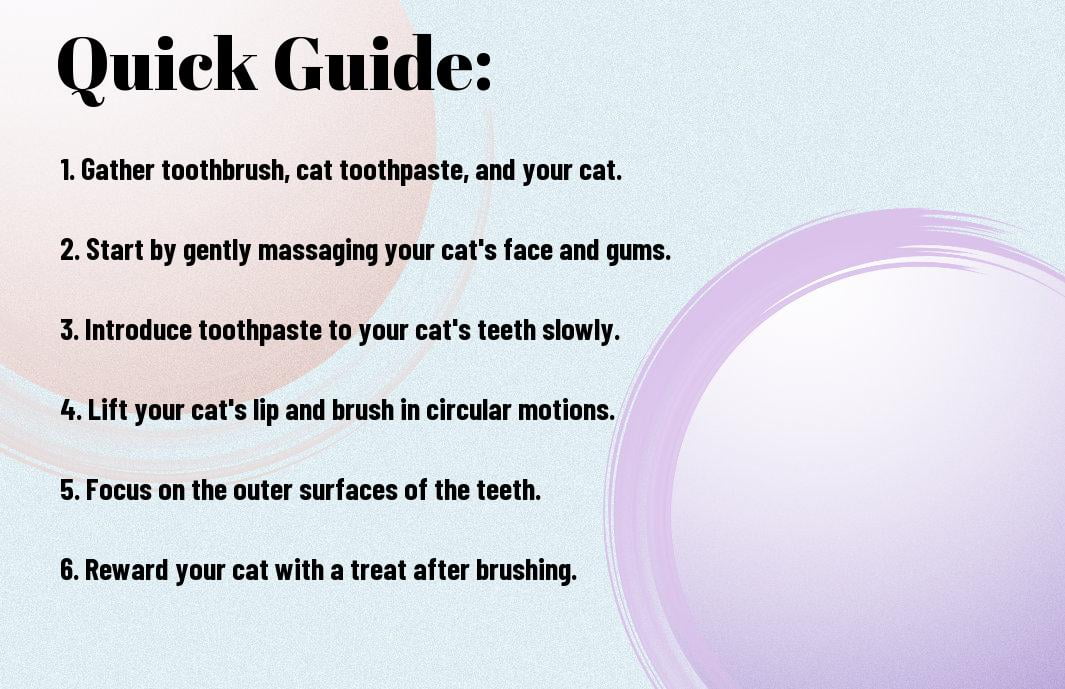
Types of Dental Products for Cats
If you are considering brushing your cat’s teeth, it is important to have the right dental products. There are various types of dental products available for cats, including toothbrushes, toothpastes, dental wipes, and dental diets. Each product serves a specific purpose in maintaining your cat’s oral health.
- Toothbrushes: Features and Varieties
Features Varieties Small Size Finger Brushes Soft Bristles Dual-Ended Brushes Long Handle Traditional Brushes Angled Head Bristle-Free Brushes Flexible Neck Silicone Brushes - Toothpastes: Selection and Ingredients
Toothbrushes: Features and Varieties
You can find a variety of toothbrushes designed specifically for cats. Features such as small size, soft bristles, long handle, angled head, and flexible neck are important for effective cleaning. Varieties of toothbrushes include finger brushes, dual-ended brushes, traditional brushes, bristle-free brushes, and silicone brushes. Each type offers unique benefits, so it is important to choose one that is most suitable for your cat’s comfort and oral hygiene needs.
Toothpastes: Selection and Ingredients
When identifying a toothpaste for your cat, it is crucial to choose one that is specifically formulated for felines. Human toothpaste can be harmful to cats if swallowed, so always use a cat-friendly toothpaste. Look for toothpaste with enzymatic action to help break down plaque and tartar effectively. Ingredients like chlorhexidine gluconate, cetrimide, and zinc ascorbate are commonly found in cat toothpastes and aid in maintaining oral health.
Cats may be sensitive to certain ingredients, so it is important to introduce the toothpaste gradually to ensure they tolerate it well. If your cat shows any signs of discomfort or allergic reactions, discontinue use and consult your veterinarian for alternatives.

Preparing to Brush Your Cat’s Teeth
Introducing Your Cat to Dental Care
If you are new to brushing your cat’s teeth, it’s important to start slow and help your cat become accustomed to the process. Start by gently touching your cat’s lips and lifting them to expose their teeth. This will help your cat get used to the sensation of having their mouth handled. You can also introduce them to the toothbrush by letting them sniff and lick it to familiarize themselves with it.
Factors to Consider Before Brushing
If you are considering brushing your cat’s teeth, there are a few factors to keep in mind. First, be sure to use a toothbrush and toothpaste specifically designed for cats. Human toothpaste can be harmful to cats if swallowed. Additionally, consider your cat’s temperament and overall health. If your cat is prone to aggression or has existing dental issues, it may be best to consult with your veterinarian before attempting to brush their teeth.
- Use a toothbrush and toothpaste designed for cats.
- Consider your cat’s temperament and overall health.
To ensure a successful dental care routine, it’s important to consider these factors before starting. Be mindful of, with patience and the right approach, brushing your cat’s teeth can become a manageable and beneficial aspect of their overall health and well-being. This will help prevent dental issues and keep your cat’s teeth and gums healthy in the long run.
Step-by-Step Guide to Brushing Your Cat’s Teeth
Your furry friend’s oral health is just as important as your own. Regular dental care is crucial to preventing dental issues and maintaining your cat’s overall health. Here is a step-by-step guide to make brushing your cat’s teeth a routine part of their grooming regimen.
Getting Your Cat Accustomed to Touch
|
An imperative first step in brushing your cat’s teeth is getting them accustomed to being touched in and around their mouth. Start by gently petting and massaging their face and lips to desensitize them to touch in that area. |
Use a soft cloth or gauze wrapped around your finger to gently rub their gums and teeth. Offer treats and praise to create positive associations with the experience. |
Introducing Dental Products
|
Teeth brushing products such as flavored toothpaste designed for cats can help make the experience more pleasant for your feline friend. |
A flavored toothpaste formulated specifically for cats can help make the brushing experience more enjoyable for your pet. Introduce the toothpaste by letting your cat lick a small amount off your finger to get them used to the taste.
The Correct Brushing Technique
|
An important aspect of brushing your cat’s teeth is using the correct technique. Gently lift your cat’s lip and brush their teeth using a small, soft toothbrush or finger brush designed for cats. |
Brush in a circular motion, focusing on the outer surfaces of the teeth where plaque tends to accumulate. Be patient and gentle to avoid causing any discomfort to your cat. |
Letting your cat sniff and investigate the toothbrush before starting can help them feel more comfortable with the tool. Gradually progress to brushing a few teeth at a time, gradually increasing the duration as your cat becomes more accustomed to the process.
Tips for Successful Dental Care Routine
Not all cats will take to teeth brushing right away, so it’s important to be patient and consistent with your efforts. Here are some tips to help you establish a successful dental care routine:
- Start slow and gradually introduce your cat to the toothbrush and toothpaste.
- Use a soft-bristled toothbrush specifically designed for cats.
- Be gentle and never force your cat to undergo the brushing process.
- Make it a positive experience by offering treats or praise afterwards.
After each brushing session, remember to reward your cat with a treat or a favorite toy to reinforce good behavior and make the experience more enjoyable for them.
Timing and Consistency
While it may seem challenging at first, establishing a daily routine for brushing your cat’s teeth is crucial for maintaining their oral health. Aim to brush your cat’s teeth at the same time each day to make it a part of their regular schedule. Consistency is key in ensuring that your cat becomes more comfortable with the process over time.
Rewards and Positive Reinforcement
There’s no denying that cats respond well to positive reinforcement. By offering rewards and praise before, during, and after each brushing session, you can help create a positive association with the activity. Treats specifically designed for dental care can also be a great incentive for your cat to cooperate during the brushing process.
Care should be taken to avoid overindulging your cat with treats, so consider using other forms of rewards such as playtime or verbal praise to keep the experience balanced.
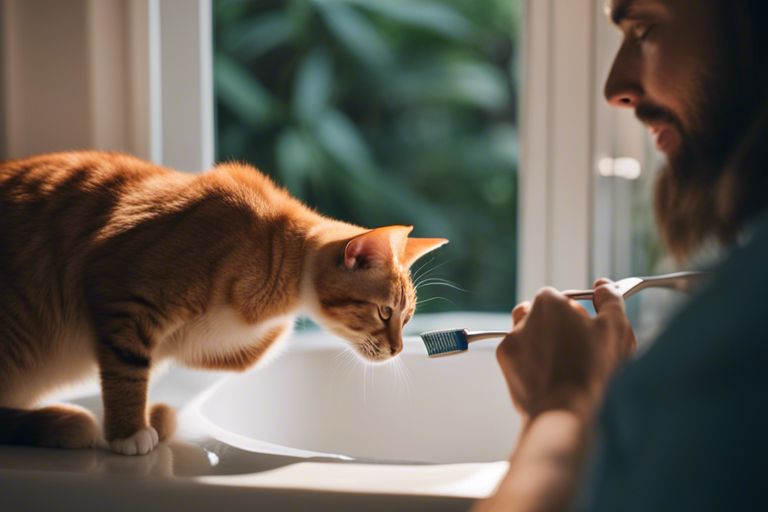
Understanding the Pros and Cons
Benefits of Regular Dental Care
Any responsible cat owner knows the importance of regular dental care for their furry friends. Brushing your cat’s teeth helps prevent plaque build-up, gum disease, and other dental issues that can lead to pain and discomfort. It also contributes to your cat’s overall health and well-being by reducing the risk of systemic diseases like kidney and heart disease.
Additionally, establishing a routine of dental care early on can make the process easier and less stressful for both you and your cat. It can also save you money on expensive dental treatments in the long run.
Potential Challenges and Solutions
Regular dental care for cats can come with its own set of challenges. Cats are known for their independent nature and may resist having their teeth brushed. Some cats may become anxious or agitated during the process, making it difficult to complete the task effectively.
However, there are solutions to these challenges. Patience, consistency, and positive reinforcement are key to successfully brushing your cat’s teeth. Introducing dental care gradually, using tasty toothpaste, and making the experience as pleasant as possible can help make it a more positive experience for your cat.
| Pros | Cons |
| Prevents plaque build-up and gum disease | Resistance from the cat |
| Reduces the risk of systemic diseases | Anxiety and agitation in some cats |
| Contributes to overall health and well-being | Difficulty in completing the task effectively |
| Saves money on expensive dental treatments | Initial challenges in establishing a routine |
Additional Dental Care Options and Services
Dental Treats and Diets
If you’re looking for ways to supplement your cat’s dental care routine, dental treats and diets can be a helpful addition. These specially formulated treats and foods are designed to promote dental health by reducing plaque and tartar buildup on your cat’s teeth. Look for products that have the Veterinary Oral Health Council (VOHC) seal of approval, indicating they meet specific standards for dental efficacy.
Professional Cleaning and Veterinary Services
If your cat is prone to dental issues or if you’re looking to take their dental care to the next level, professional cleaning and veterinary services can be beneficial. A veterinary dental cleaning involves a thorough scaling and polishing of your cat’s teeth under anesthesia, allowing for a more comprehensive cleaning than what is possible with at-home care alone.
Services like dental X-rays can also be performed to assess the health of the teeth and gums below the gum line. Your veterinarian can provide recommendations on the frequency of professional cleanings based on your cat’s individual needs and dental health status.
Summing up
Following this step-by-step guide to brushing your cat’s teeth will help improve your cat’s dental health and overall well-being. By establishing a regular brushing routine and using the proper tools and techniques, you can prevent dental issues such as gum disease and tooth decay. Remember to be patient and gentle with your cat during the brushing process to ensure a positive experience for both of you.
FAQ
Q: Why is it important to brush my cat’s teeth?
A: Brushing your cat’s teeth helps prevent dental issues such as plaque, tartar, and gum disease, which can lead to pain and infections.
Q: How often should I brush my cat’s teeth?
A: It is recommended to brush your cat’s teeth at least 2-3 times a week to maintain good oral hygiene.
Q: What tools do I need to brush my cat’s teeth?
A: You will need a cat toothbrush, cat-friendly toothpaste, and if needed, dental wipes or dental treats.
Q: How can I make brushing my cat’s teeth easier?
A: Start by getting your cat comfortable with having their mouth touched, then gradually introduce the toothbrush and toothpaste to create a positive association.
Q: Are there alternatives to brushing my cat’s teeth?
A: Yes, there are dental diets, treats, and toys that can help reduce plaque and tartar buildup, but brushing remains the most effective method for maintaining oral health.
